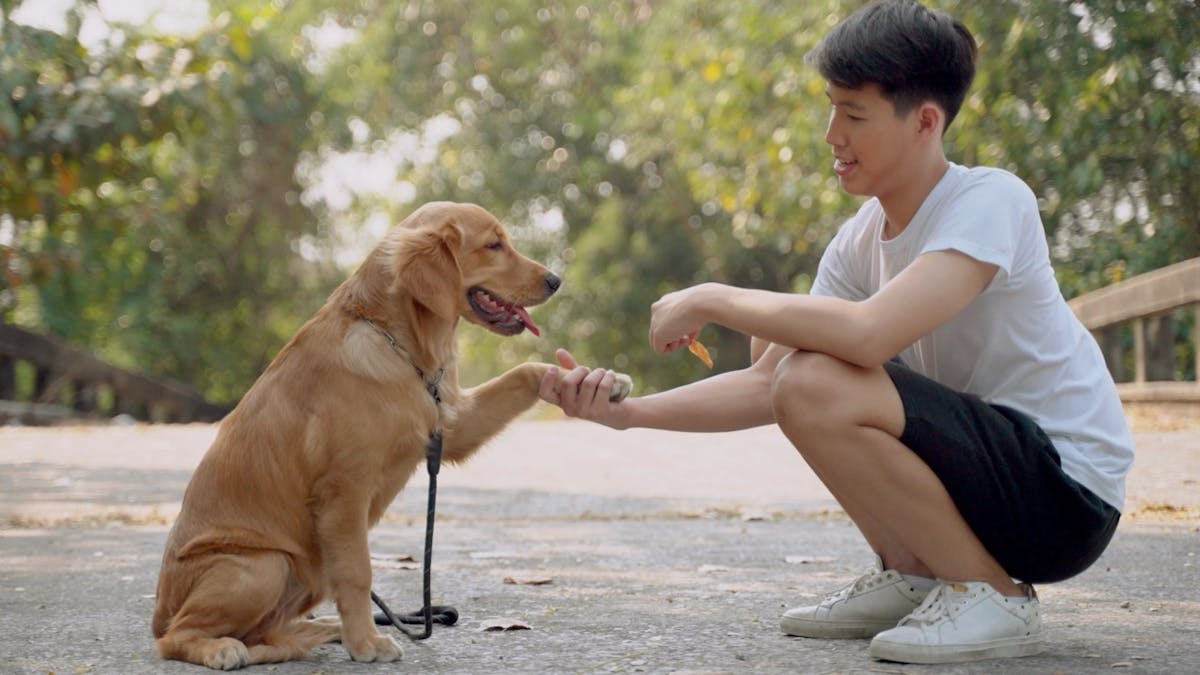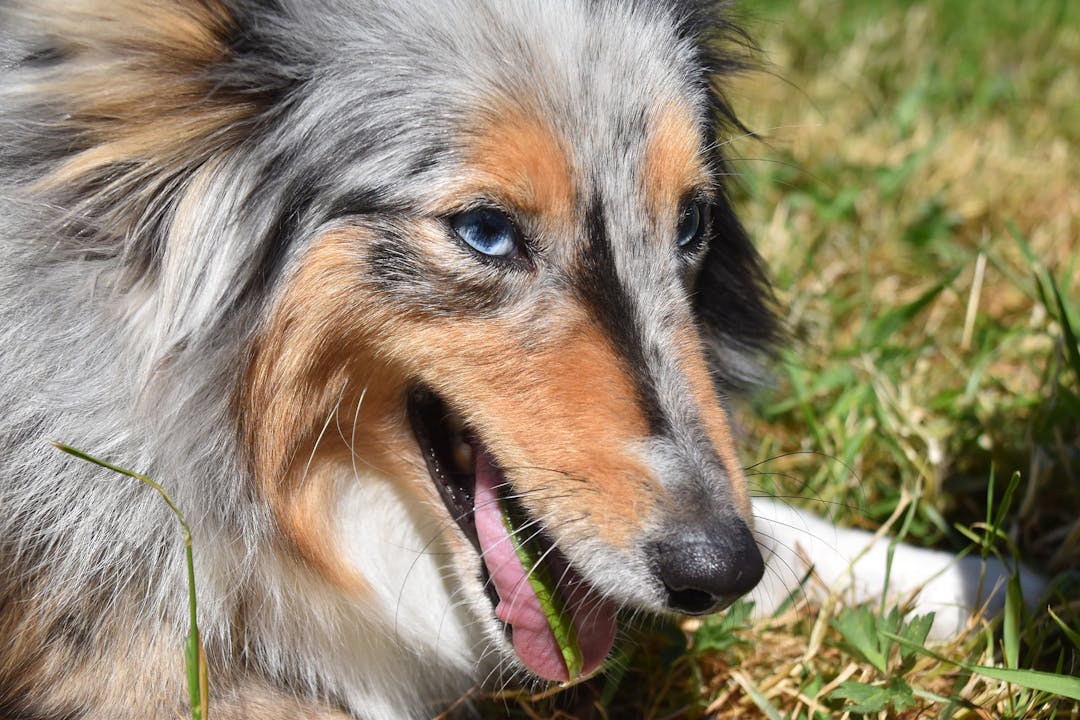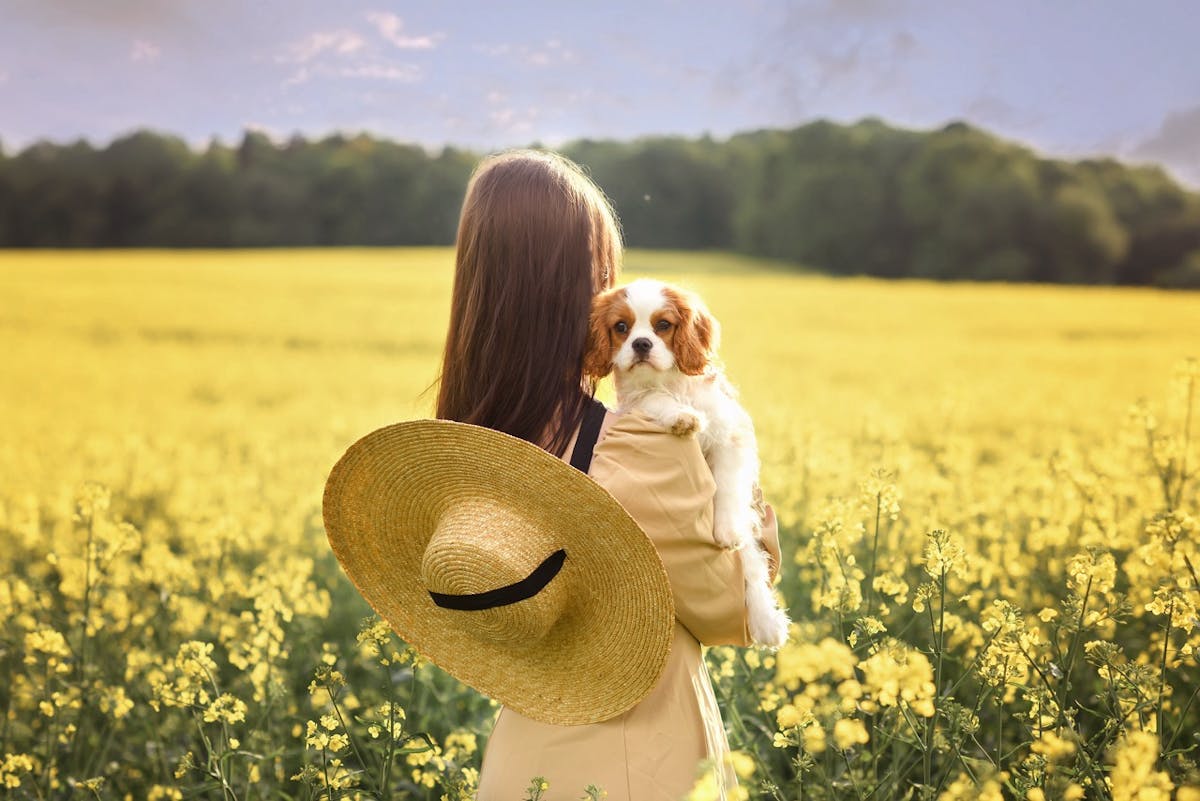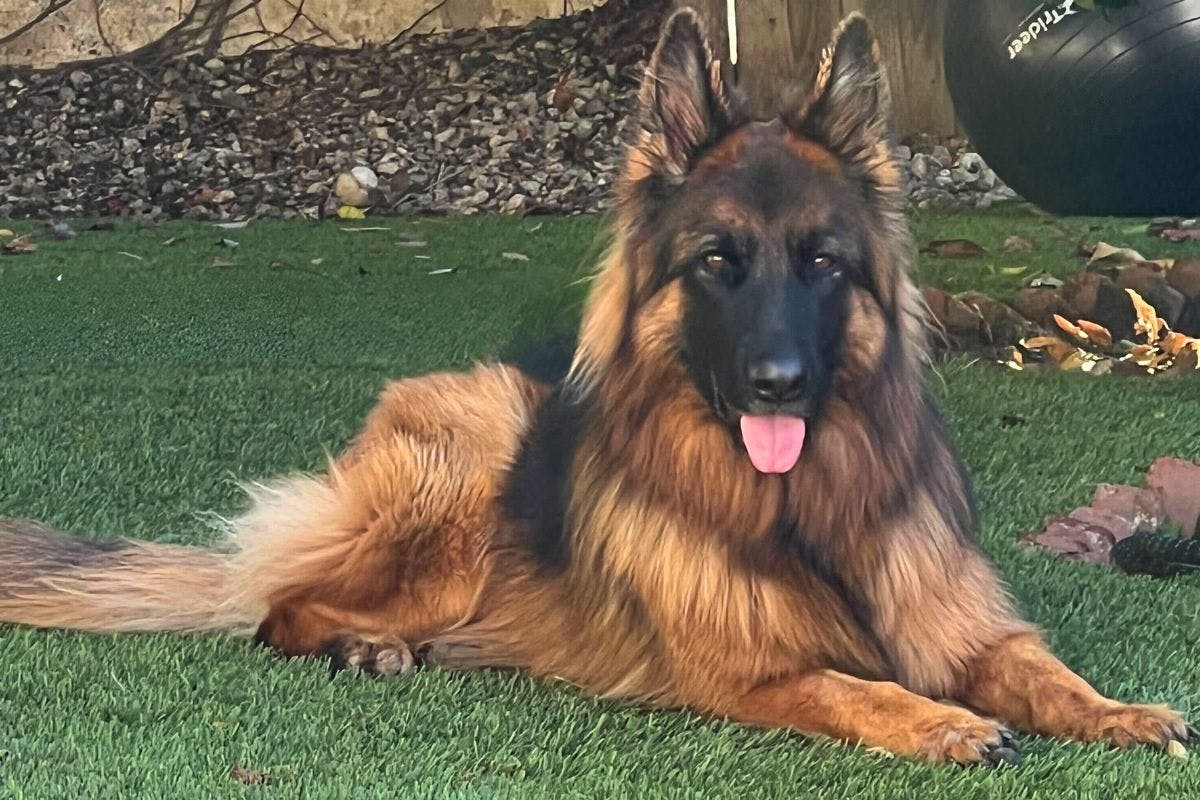Have you ever seen your dog eat grass? You’re probably wondering why your fur baby opted to nosh on the lawn instead of the carefully selected kibbles you bought just for them. Are they getting enough food? Is it even safe for your dog to eat grass or other plants? Here are a few reasons why your dog is eating grass:
- Pica: In dogs, eating grass has been linked to a disorder called pica—the consumption of non-food items sometimes caused by a nutritional deficiency.
- Lack of fiber: Dogs are actually omnivores, so their bodies still need sources of fiber. Studies show that putting a dog on a high-fiber diet can lead to your pup quitting grass for good.
- Boredom: If you think your dog is eating grass out of boredom, they might just need more exercise and stimulation. Try a fun activity like fetch to pass the time or invest in some new chew toys.
Other reports suggest that dogs eat grass to aid in digestion—including treating intestinal worms—or relieve an upset stomach by vomiting after eating grass. But less than 25% of dogs that eat grass vomit regularly afterward, so, this is not a widely held belief.
Normal Dog Behavior
Even if your dog doesn’t have any of the issues listed above and they’re still eating grass, it is possible that your dog just likes the taste of grass. Sometimes eating grass is just normal dog behavior. Experts agree that eating grass is generally safe, but there are a few potential dangers to be aware of:
- Eating grass can cause intestinal parasites that are easily picked up from animal droppings
- Toxic chemicals found in herbicides and pesticides sprayed on your lawn could be harmful to your dog
- Many common house and garden plants are toxic
Read on to learn more about which plants to look for, which ones to avoid, and how to keep your dog safe.
Keep Your Grass Dog-Friendly
There’s not much you can do about animal droppings on your lawn—especially if you have multiple pets or if your yard faces the public. You do have control over the use of herbicides and pesticides and which plants your dog has access to. For a printable list of toxic and non-toxic plants, visit the ASPCA’s Animal Poison Control Center.
There are a number of plants that are dangerous to your pets. Here are a few of the most common plants and trees to avoid:
- Apple
- Fern palm
- Black walnut
- Daisy
- Azalea
- Lily of the valley
- Eucalyptus
- Gardenia
- Cowbane
- Hydrangea
- Aloe
- Ivy
- Calla lily
- Mistletoe (American)
Toxins in plants can be found in the stems, flowers, leaves, roots, and seeds. Some contain cyanide, neurotoxins, and other scary substances. Toxic plant ingestion can lead to vomiting, diarrhea, pain and swelling of the mouth, excessive drooling, trouble breathing, seizures, tremors, and even death. If you think your pet has eaten something toxic, contact a vet right away.
Don’t worry—there are plenty of plants that are safe for your pooch. Here are a few of the most common:
- African violet
- Easter orchid
- Petunia
- Bamboo palm
- Gerber daisy
- Basil
- Magnolia bush
- Chaparral
- Moss fern
- Begonia
- Jackson brier
- Bluebottle
- Patient Lucy
- Jasmine
Many of the plants on this list are safe for cats, too. Be sure to check the full list before revamping your garden. Keeping non-toxic plants in your yard will give you peace of mind.
Keep a close eye on your dog even when you’re out on a walk—you might come across some plants and shrubs that you’re not familiar with. Or, you might even consider opting for a decorative rock lawn. If your dog is showing signs of distress or discomfort after ingesting something, we can connect you to a licensed veterinarian, any time, 24/7.





